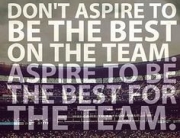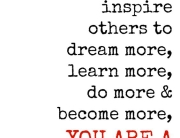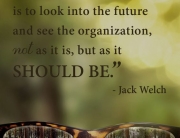 I remember when my wife bought my first Bluetooth headset. I was so excited. The packaging stated the headset has high-definition audio and I could not wait to rock my new headset while getting in a nice run. Before I could use the headset the device needed be paired with my phone. First, I needed to set the headset up to transmit the pairing signal. Next, I setup my phone to discover the new Bluetooth headset. Once the device was recognized and communication was established, I entered the 4 digit code and clicked “pair”. At that point, my phone was now coded to my headset. The headset becomes more valuable when the communication path is open and it is recognized by the phone. As these devices operate in tandem the system has a greater value than the individual parts. When leaders establish lines of open communication and values the actions of their followers they build loyalty. As the leader consistently drives the vision and as he or she reflects the values of the mission, they demonstrate by example of what matters most. The followers pay close attention to the leaders consistent language and actions which eventually leads to buy in. When followers feel connected with the leader they also feel supported and purpose-filled. Purpose-filled teams are full of energy, energy is infused in the culture that creates a legacy of loyalty. As leaders how do we spark that pairing process that builds loyalty?
I remember when my wife bought my first Bluetooth headset. I was so excited. The packaging stated the headset has high-definition audio and I could not wait to rock my new headset while getting in a nice run. Before I could use the headset the device needed be paired with my phone. First, I needed to set the headset up to transmit the pairing signal. Next, I setup my phone to discover the new Bluetooth headset. Once the device was recognized and communication was established, I entered the 4 digit code and clicked “pair”. At that point, my phone was now coded to my headset. The headset becomes more valuable when the communication path is open and it is recognized by the phone. As these devices operate in tandem the system has a greater value than the individual parts. When leaders establish lines of open communication and values the actions of their followers they build loyalty. As the leader consistently drives the vision and as he or she reflects the values of the mission, they demonstrate by example of what matters most. The followers pay close attention to the leaders consistent language and actions which eventually leads to buy in. When followers feel connected with the leader they also feel supported and purpose-filled. Purpose-filled teams are full of energy, energy is infused in the culture that creates a legacy of loyalty. As leaders how do we spark that pairing process that builds loyalty?
“The greater the loyalty of a group toward the group, the greater is the motivation among the members to achieve the goals of the group, and the greater the probability that the group will achieve its goals.” – Rensis Likert







Rod –
I enjoyed reading your analogy on collaboration. Vast experience in a given field, coupled with demonstrated domain knowledge will generally earn you the professional regard needed to land some form leadership role. In my opinion, what will make a simple following out of obligation transcend into genuine loyalty is the leadership’s ability to collaborate the entire team in alignment with the overall business objectives.
In addition to providing a sense of belonging, full engagement from all team members will often times lead to opportunities for them to showcase their abilities in certain areas; which may open the door for occasional situational leadership opportunities for them; which ultimately will mean professional development on their part. I think that truly developing a familiarity with the team members, where their talents/interests lie, and seizing opportunities to place them in areas where they can thrive will indeed spark the incentive required for them to want follow your leadership not simply because you are positioned above them on the org. chart – but because you have established a mutually beneficial relationship with them professionally.
I’ve yet to have an opportunity to lead my own team, but speaking as someone who has been exposed to various leadership styles, I can say that my allegiance lies mostly with those of whom I gained some form of professional enrichment from having worked under their direction.
Hello Leigh,
Thanks for the reading the post and for the feedback. Your point about the org chart resonated with me. Leadership is not about the position or the title, it’s about how we influence the people around us. By the way, you don’t need to wait for the opportunity to lead, make leading part of your identity and the position will find you!
Rod